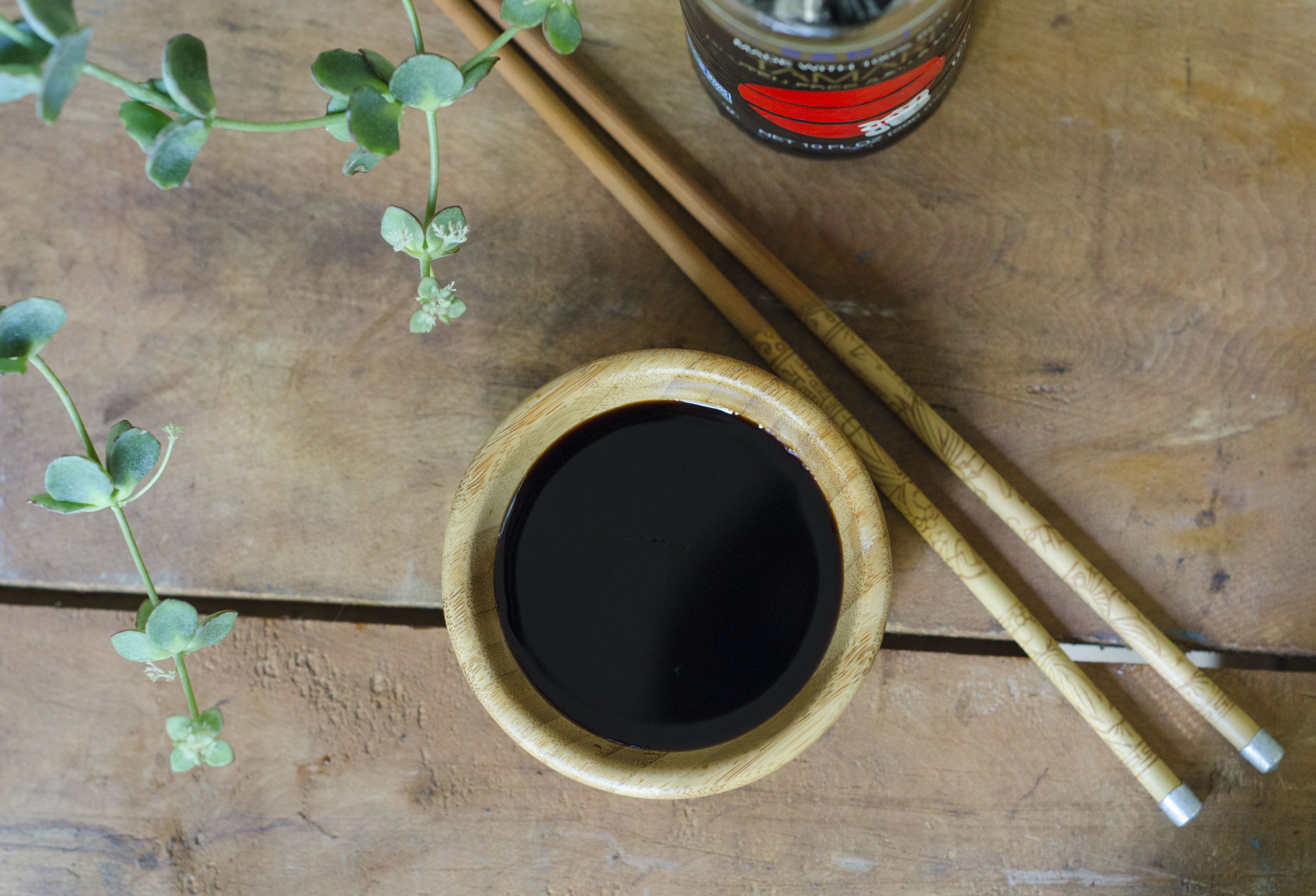You open a recipe and realize it calls for soy sauce. But before adding the soy sauce you have in your pantry, stop. Is it the type of soy sauce that would work best to bring out the dish’s flavors? Is it the most healthy soy sauce or the best non-GMO soy sauce you can find?
Many people, including long-time cooking enthusiasts, are unacquainted with the numerous variations of soy sauce.
If you’ve always thought that soy sauce was a single condiment, get ready for a fun, delicious education.
Below, we’ll explore some basic soy sauces that originated over the past 3,000 years in Asia. Choose the one you want to try the next time you need a splash of soy sauce to liven your meal.
Soy Sauces From China
Authentic Chinese soy sauces tend to be made mostly from fermented soybeans with few add-ins except for the bacterial cultures. Pure soybean, sometimes called “thin,” soy sauce is light in color and mellow in flavor. It’s perfect when you need to add a slightly salty twist to your cuisine. It’s also a wise choice for almost any Chinese dish that requires soy sauce but gives no other explanation.
Dark Chinese soy sauce provides less saltiness than the thin type. Not only is it fermented longer than thin soy sauce, but it may have a few sweeteners added to give it a complex “tang versus sweetness” overtone. A dark soy sauce is ideal if you want to dash it on at the final moments to breathe an extra level of taste into your food.
Soy Sauces From Japan
For Japanese recipes such as sushi and teriyaki, you’ll want to grab a bottle of shoyu. Don’t worry, though — it’s still soy sauce. Shoyu is just the Japanese counterpart to China’s soy sauce.
The main difference between Chinese and Japanese soy sauce is that the Japanese chose to add wheat to at least two kinds of shoyu. The ratio of soybeans to wheat varies depending upon the desired soy sauce outcome. However, the inclusion of wheat in the brewing process leaves the soy sauce with a natural sweetness.
Like Chinese soy sauce, Japanese soy sauce comes in both light and dark choices. Light Japanese soy sauce has been augmented by a bit of rice wine, leaving it characteristically pleasing and intense. You certainly don’t need to overdo it with light soy sauce. On the other hand, dark Japanese soy sauce is rich in body but plays lightly on the tongue. It’s probably the most readily available commercial type of Japanese soy sauce in American grocers. Use it to breathe excitement as a marinade or dipping sauce.
Two final types of Japanese soy sauce are tamari and shiro. Tamari, which lacks wheat, offers an assertive tang and makes a terrific sauce for dipping. Truly wheat-free, organically produced and non-GMO tamari is especially sought-after by people following gluten-free diets.
Shiro is simply white soy sauce, created by adding a higher proportion of wheat to the soybeans during fermentation. Because white Japanese soy sauce doesn’t add any coloring to food, it’s often favored by cooks who want to deliver taste without making light-colored foods, such as fish, an unnatural hue.
The Best Soy Sauce for Your Kitchen
Which soy sauce belongs in your cool, dark pantry or refrigerator? That’s up to your taste buds and preferred recipes.
Ideally, though, you’ll want to pick a soy sauce with no added MSG and as pure in flavor as you can get, such as SAN-J Tamari Soy Sauce and other Asian Cooking Sauces. After your purchase, experiment with several kinds of soy sauce as you test new healthier snacks and dishes at home.
Back to Top

